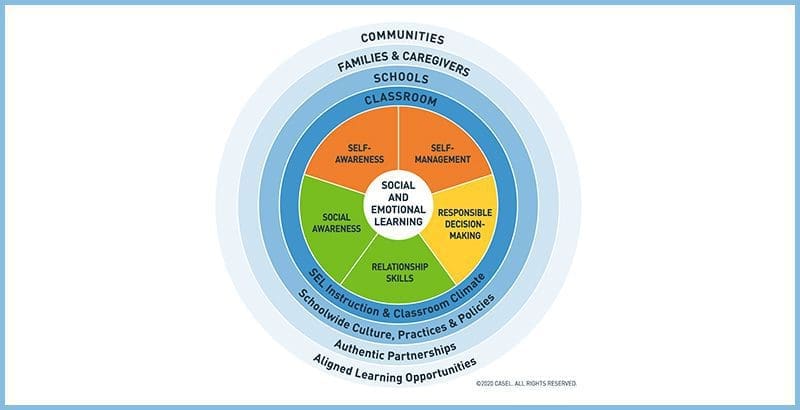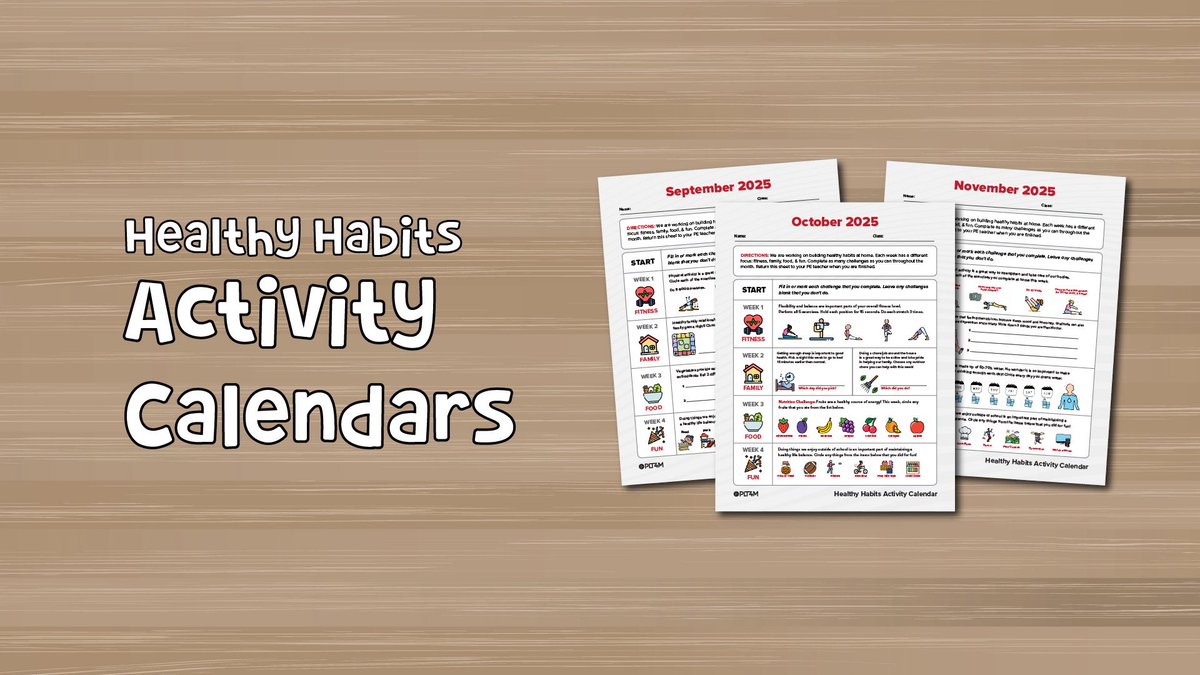Social emotional learning (SEL) is an integral part of physical education and can positively impact student health and well-being. This article explores the importance of social emotional learning in physical education and provides practical strategies for incorporating SEL into physical education classes.
What is Social Emotional Learning?
The Collaborative for Academic, Social, and Emotional Learning (CASEL) is the nation’s leading organization advancing the development of academic, social and emotional competence for all students. CASEL defines SEL as,
“The process through which all young people and adults acquire and apply the knowledge, skills, and attitudes to develop healthy identities, manage emotions and achieve personal and collective goals, feel and show empathy for others, establish and maintain supportive relationships, and make responsible and caring decisions.”
The five SEL competencies are:
Self-awareness
Self-management
Responsible decision-making
Relationship skills
Social awareness
And these core competencies are layered right into the Shape America National Standards for physical education. For example, standard 4 of the physical education standards states,
“The physically literate individual exhibits responsible personal and social behavior that respects self and others.”
Taking a deeper dive, the Shape America National Standards point directly to the social-emotional skills defined by CASEL. Therefore, physical education teachers are now empowered and implored to develop opportunities for social emotional learning in physical education.

Importance of Social Emotional Learning In Physical Education
The mental health conditions of students are a major public health concern. While mental health problems are not a new phenomenon among adolescents, there are rising rates of mental health issues among students.
For example, over 70% of teens today cited Anxiety and Depression as the number one issue affecting their peer group. If that number isn’t startling enough, the CDC also cites a few statistics that are raising concern for mental health professionals and schools,
In 2021, more than 4 in 10 (42%) students felt persistently sad or hopeless, and nearly one-third (29%) experienced poor mental health.
In 2021, more than 1 in 5 (22%) students seriously considered attempting suicide, and 1 in 10 (10%) attempted suicide.
Beyond mental health, schools are also seeing growing trends of student behavior issues. One report from NCES cited the following challenging behaviors to be the most frequently reported:
Classroom disruptions from student misconduct (56 percent)
Acts of disrespect towards teachers and staff (48 percent)
Rowdiness outside of the classroom (49 percent)
The prohibited use of electronic devices (42 percent)
Unfortunately, schools often have to take a reactive approach to these different situations of mental health and behavior issues. But social emotional learning presents an opportunity to take a proactive approach.
Social emotional learning in physical education curriculum can create a positive environment for students to explore and practice SEL skills on a regular basis. As a result, students can build strong relationships with the mind-body connection and develop crucial social skills needed to navigate school and life.
Types of Social Emotional Learning in Physical Education
Social emotional learning is a broad and all encompassing subject. And PE teachers want to know exactly how to hit on SEL competencies in physical education classes But, the beauty of social emotional learning in physical education can be both explicit and implicit depending on the PE lesson plan.
Explicit SEL Activities: These are targeted SEL lesson plans that focus directly on SEL skills in class. In explicit lesson plans, SEL skills are clearly labeled and defined as part of the lesson. For example, teachers use mindfulness lesson plans or breathing exercises as ways to incorporate explicit SEL activities into physical education classes.
Implicit SEL Activities: There are unlimited options and opportunities to incorporate SEL skills into activities and lesson plans implicitly through physical activity. While students might not know they are building SEL skills in real-time, physical education teachers can feel confident knowing they are addressing them throughout the classroom. For example, even something like a pickleball unit or fitness education lesson in physical education is tapping into a wide range of social-emotional skills.
Combined, explicit and implicit social emotional learning activities can support the complete picture of student development.
Bonus Content – Free SEL lesson plan from PLT4M. Here we break down the emotion of mental stress and guide students through an activity to unpack stress in their daily lives. (This is an example of explicit social emotional learning in physical education)
Resources For Social Emotional Learning For PE Teachers
Just because PE teachers have been tasked with social emotional learning in physical education, doesn’t mean they have to create curriculum and lesson plans from scratch. Instead, countless resources support SEL in physical education curriculum.
PLT4M has a comprehensive slate of content and curriculum for teachers to use throughout the school day. Physical education classes can tap into explicit and implicit lesson plans and activities that address and develop the 5 core competencies of SEL.
For example, Canton High School in Massachusetts is nationally recognized physical education program that supports all students. Last year, Canton was featured on Edutopia for creating a vast array of SEL possibilities in physical education classes.
Check out the video from inside Canton PE below and click the link below to read the full article on SEL possibilities in PE.
Links and Resources For More SEL Content
Looking for targeted SEL activities for physical education. Check out these different sample lesson plans and activities:
Key Takeaways on Social Emotional Learning in Physical Education
As schools look to make SEL an integral part of the school day, they should look no further than physical education classes:
Through SEL, schools can take a proactive approach to addressing and managing student mental health and behavior.
Social emotional learning is directly written into the Shape American National Standards for physical education.
There are endless opportunities to teach social-emotional skills implicitly within physical activity lesson plans.
Physical education teachers can also incorporate explicit SEL activities that address different emotions, mindfulness, meditation, breathing exercises, and more.
If you want to take your social-emotional learning in physical education to the next level, reach out to PLT4M for a free consultation.






